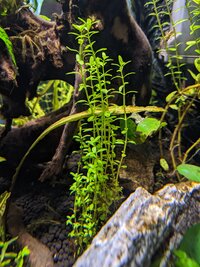saundersbp
Member
Hello,
My Amazon Frogbit has started producing new lea
 ves that are whitish. Is this anything I need to worry about. I couldn't find anything on line to check.
ves that are whitish. Is this anything I need to worry about. I couldn't find anything on line to check.
Many thanks
My Amazon Frogbit has started producing new lea
Many thanks


